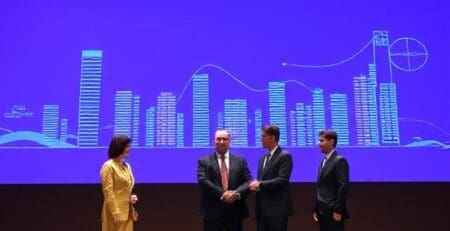EU Membership is not enough: Lessons from CESEE for Albania
From the illusion of proximity to the real challenge of internal transformation – Albania on the verge of a decisive path
1. The long and fragmented journey of integration
For more than three decades, the countries of Central, Eastern, and Southeastern Europe (CESEE) have followed a determined path toward European Union membership. Along this road, the early achievements were evident:
• Trade expansion and integration into global value chains boosted economic growth;
• Foreign direct investments brought technology, managerial know-how, and increased productivity;
• Per capita incomes rose significantly, with some countries closing the gap with the EU;
• Significant institutional and legal reforms were undertaken to meet membership criteria.
2. The EU’s role as an anchor of reform
The European Union has served not only as a political destination but also as a strategic anchor for reforms. Mechanisms such as the acquis communautaire, the Copenhagen criteria, and extensive financial assistance have operated as positive pressure tools for modernizing the state, public administration, and business environment.
3. Unfinished reforms and new structural problems
Although many CESEE countries have joined the EU, post-accession reality has not always met expectations. The reform process has faded, and “reform fatigue” has become a systemic phenomenon.
• Following the 2008 financial crisis, investments shrank and productivity growth slowed;
• Reforms in public administration, justice, and the education system stalled;
• The labor market faces a lack of skills, while emigration and demographic aging have deepened structural issues;
• High energy costs and the shifting of global value chains are challenging the traditional growth model.
In the first phase, CESEE countries succeeded due to the “accelerated catching-up” with the EU through trade integration, European funds, and FDI.
But that formula is now exhausted.
A second development phase requires:
• Sustainable institutional transformation;
• Endogenous innovation and an education system that prepares the new generation for technological challenges;
• Transparent governance and a functional state that ends clientelism and bureaucratic stagnation.
The Case of Albania: Between a historic opportunity and the risk of repeating past mistakes
Albania currently finds itself at a key phase of the accession process: negotiations have opened, but they remain at the technical stage of chapter screening. At this point, there is a risk of repeating the model of countries that “grew tired” of reforms after initial progress.
What can Albania avoid?
• The false self-satisfaction from the opening of negotiations – the technical process is not a final political success, but the beginning of a painful institutional transformation;
• The politicization of reforms – reforms in justice, administration, education, and the labor market cannot be seasonal electoral issues but part of a long-term national project;
• The capture of funds and lack of absorption capacity – EU funds are neither a blessing nor a curse in themselves, but depend on transparency, administrative capability, and civil society oversight.
What can Albania build?
• A new social contract between the state and citizens, where reforms are not “temporary pain” but infrastructure for sustainable development;
• National strategic capacities for reform and implementation, not just for meeting technical criteria, but for a functional state that delivers modern services and promotes innovation;
• Bold policies for youth and talent to curb emigration and create real reasons for staying and building in their own country.
Revival of reforms supported by three pillars to avoid stagnation
If reforms continue to be delayed, Albania—like CESEE countries—risks falling into a harmful status quo where growth is low, citizens’ hope fades, and nationalism fills the political vacuum. Meanwhile, international competitiveness will be at risk.
Based on various analyses and primarily IMF-based models, experts have identified three critical intervention areas:
1. Education and skills reform
The mismatch between diplomas and the labor market has become pathological. Countries like Croatia and Bulgaria experience emigration of qualified youth, while businesses report a lack of talent. Intervention must be radical: education oriented toward STEM, lifelong training, and strong ties with the private sector.
2. Governance and rule of law
Without independent and credible institutions, investments hesitate. Romania’s case is a warning – progress in justice was reversed post-accession, showing that the EU is not enough as a guarantee for sustainable reforms in the absence of internal political will.
3. Labor market flexibility and technological embrace
The use of new technologies and restructuring of the labor market require active policies, not merely passive waiting for foreign investors. Slovenia has launched policies to incentivize digital startups – a model that could expand in the region.
In conclusion, it is worth stating that European integration is not a finish line, but a new development contract and the beginning of new challenges.
The process of European integration is more than a bureaucratic journey of chapters and checklists—it is an internal reform of the state, market, and society model.
For Albania and CESEE countries, the real risk is not non-membership, but incomplete membership, where the country enters the EU without building the foundations for a competitive economy, functional institutions, and the rule of law.
The choice is clear: either deep reform to seize the future, or soft stagnation with the illusion of integration.




Leave a Reply
You must be logged in to post a comment.